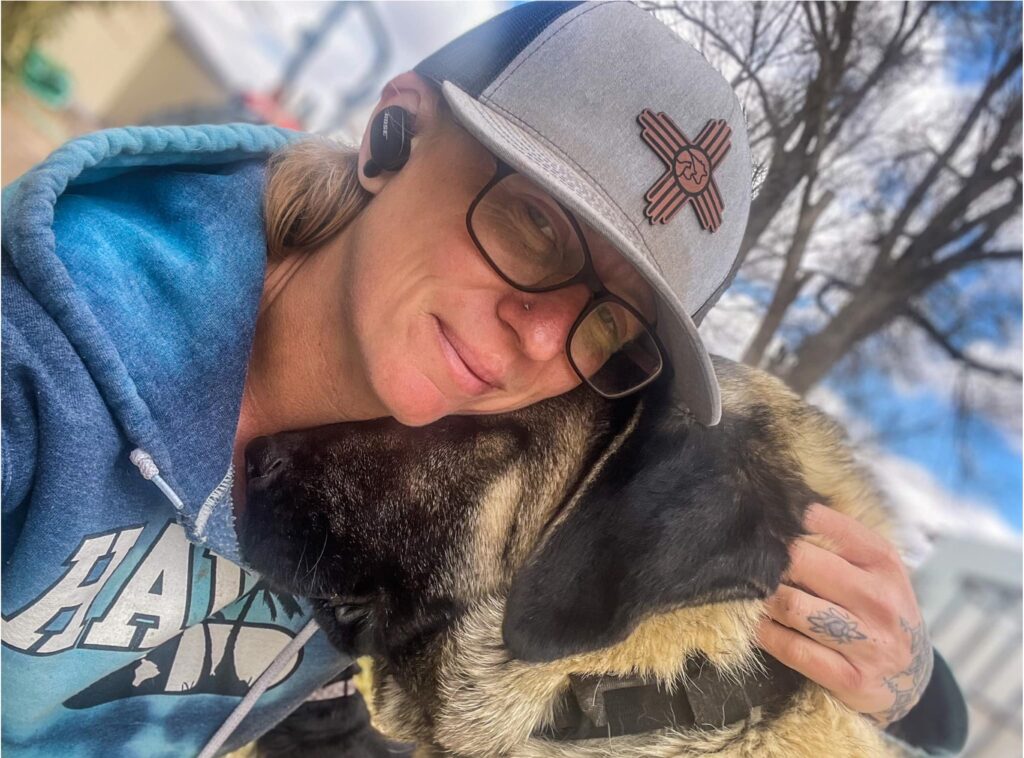
Kirsten Couevas started Sublime Pastures, a small diversified farm near Adelino, New Mexico, with her then husband, Nathan, in 2018. Over the years they were able to grow their operation with their owned and leased land. When Kirsten and Nathan divorced in 2022, Kirsten continued the farm on her own. She reduced the production of her farm to accommodate her changed life circumstances and the additional work she is doing in the regenerative agricultural industry, including becoming a technical service provider in regenerative agriculture for the Valencia Soil and Water Conservation District (SWCD).
While Kirsten had grown up around agriculture with her grandparents, it was only five years ago that she made the move to start her regenerative farm on the four acres she inherited from her grandparents. She currently leases another three acres, but at one point she was up to 40 acres of owned and leased land.
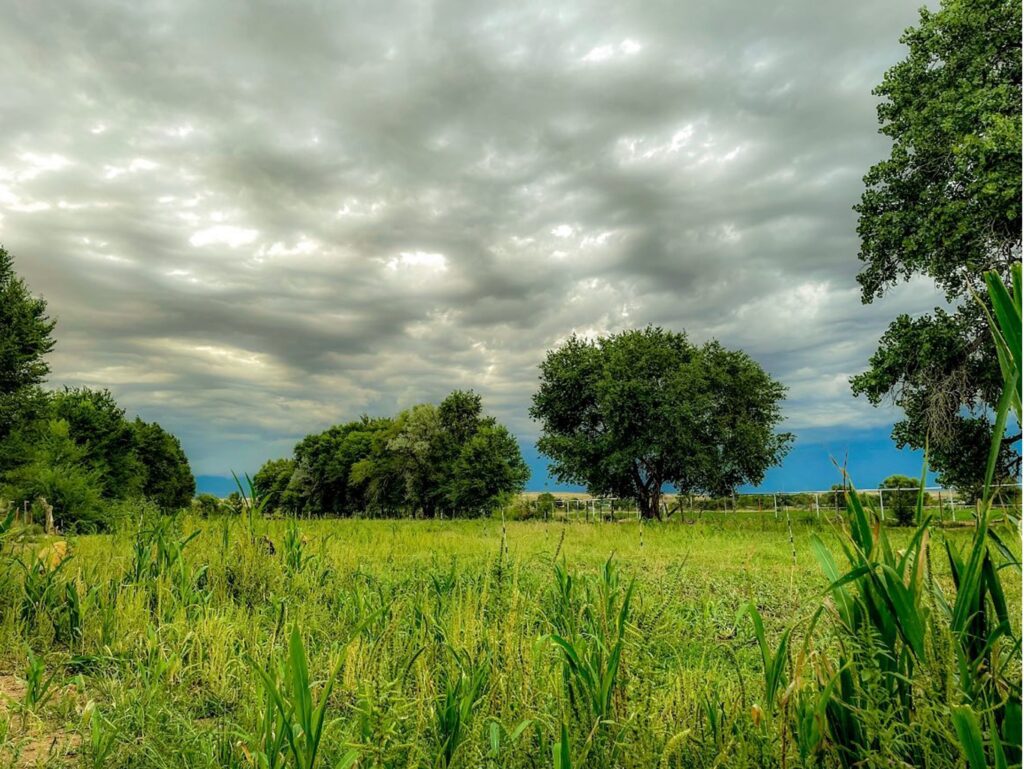
Her regenerative journey began at the 2018 REGENERATE Conference in Albuquerque where she had earned a scholarship as a HERD Fellow. This annual conference highlights various regenerative practices and offers scholarships to beginning farmers and ranchers to provide them with regenerative agricultural training as well as offering opportunities to network with other farmers and ranchers. “That fellowship was the start of my regenerative journey,” says Kirsten. “Then I went to HMI’s Open Gates and took online courses. Now I’m partnering with the Valencia SWCD. If they get someone who is interested in having their fields seeded with a no-till drill or are interested in regenerative farming, they put me in contact with them. I specialize in small farms and my no-till drill is only 8-feet wide. I like to take land that has been fallowed and help improve the soil health. I pretty much work in Valencia and Socorro counties.” In this way, Kirsten feels like she can give back some of the help that was given to her when she started farming.
Growing Production
By 2020 Kirsten was producing meat chickens, layers, turkey, pork, and beef. Kirsten remains USDA-certified for her meat chickens, under a 1,000-bird exemption rule. She chose to raise them organic and with non-soy food (using peas as a protein source instead). She had to get her septic and well tested as part of that certification process. In New Mexico, you can be certified using an outdoor processing facility, but Kirsten set up her equipment in a closed carport for her processing area. She is working on creating a commercial kitchen next. This certification inspection is free and Kirsten is one of four small processors certified under this program in New Mexico. She sold all her birds at the Downtown Farmer’s Market. She was able to produce 750 birds in one season and sold them for $6.50/lb as wholes.
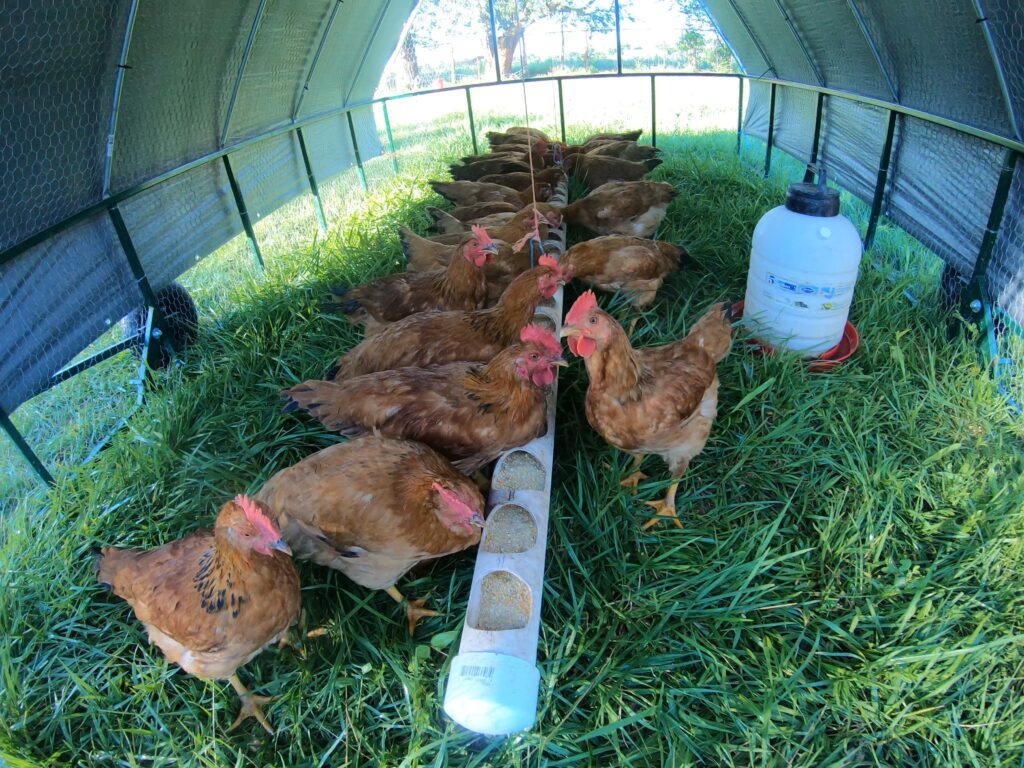
Kirsten used a Cornish crossed with a Red Ranger for her meat bird which is called a Robust White. She said it takes two weeks longer to be ready for market, but it has a more heritage bloodline which makes it hardier. She gets the birds from Moyer’s in Quakerstown, Pennsylvania. “I didn’t have issues with birds having heart attacks, but it was 10-12 weeks before they were ready for processing,” says Kirsten. “They worked really well and at most I only lost 20 a year (for a 3% death loss). I ran them in a mobile tractor behind the cattle with the poultry netting from Premier 1 Fence. I also got some Kangel Livestock Guardian Dogs (LGD) because we did have a mountain lion attack.”
Kirsten also raised 50 turkeys and sold them as a special order through NM Harvest. She named her price per pound and then NM Harvest added their delivery fee. She easily sold all her birds.
When Kirsten was leasing more land for haying and grazing, she found that it was relatively easy to get leases. People were often willing to except meat in lieu of the lease fee. She decided to not hay given the financial return on her time and she wanted to focus on grazing. She found many people who wanted their property grazed and she works with people on a year-to-year lease.
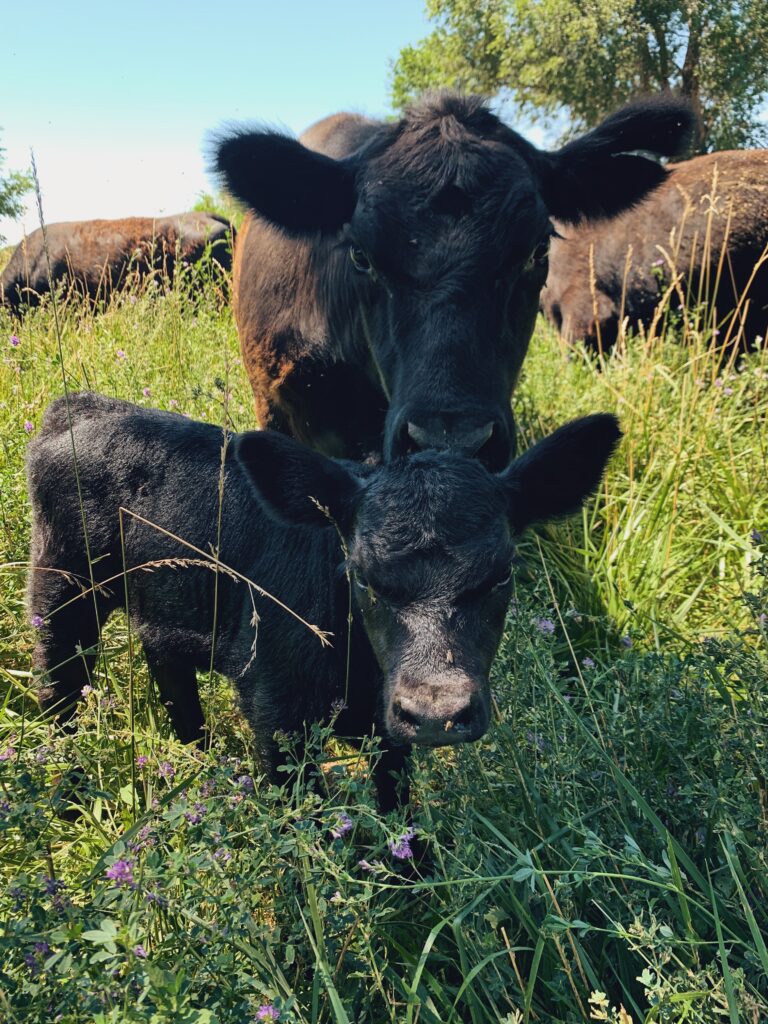
Now Kirsten has scaled back to just two Aberdeen cows, a bull, and two steers. These smaller framed cows mean that Kirsten can run two to three cows/acre. She trains them to a one-wire electric fence when they are young so she can control their pasture moves and make sure that plants have adequate time for recovery and keep them from overgrazing the pasture.
The Kunekune heritage pigs from New Zealand have remained a passion for Kirsten as she sells them for breeding stock and meat. The Kune are a grazing pig as their snout is upright and they do not disturb the pasture with rooting like most pigs would. She has had her pasture laser-leveled because of the flood irrigation and doesn’t want the pigs to damage this work. She knew she didn’t want to get sheep because of parasite concerns, but she wanted a grazing animal that could make use of the broadleaf plants as well as grass. The pigs do that well. “The pigs are really easy to train to a hot wire fence,” says Kirsten. “They stay behind the cattle and I put the hot wire at two feet off the ground. I make sure the forage has a 60 to 90-day recovery after the animals have gone through.
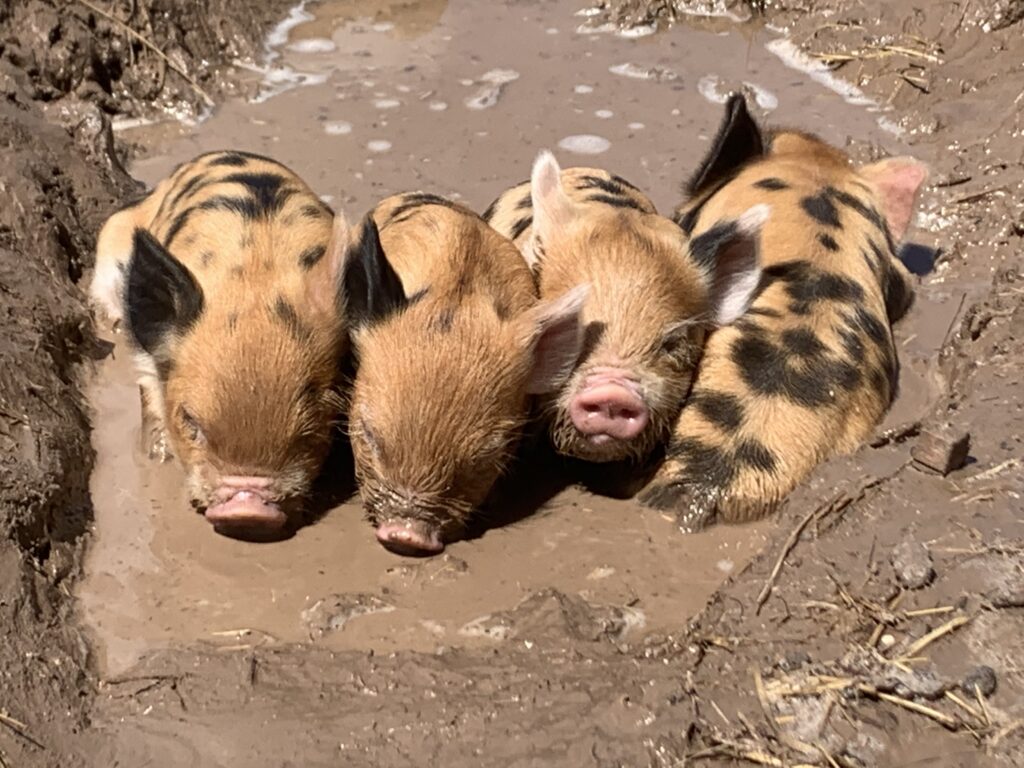
“I also wanted the Kune because they are super-friendly. As a registered breeder I sell 4-5 litters a year as well as raise some for meat. Kune are red meat unlike other pigs, so some people with issues eating pork can eat Kune. It takes between 18-24 months to get them to market weight (approximately 250 pounds). They have a very hairy winter coat so they are pretty hardy. Currently I have six sows and two boars. I sell the weaned piglets at eight weeks to homesteads. A weaned barrow or pet pig might run $250, with a gilt for breeding stock running around $500.
Soil Health Focus
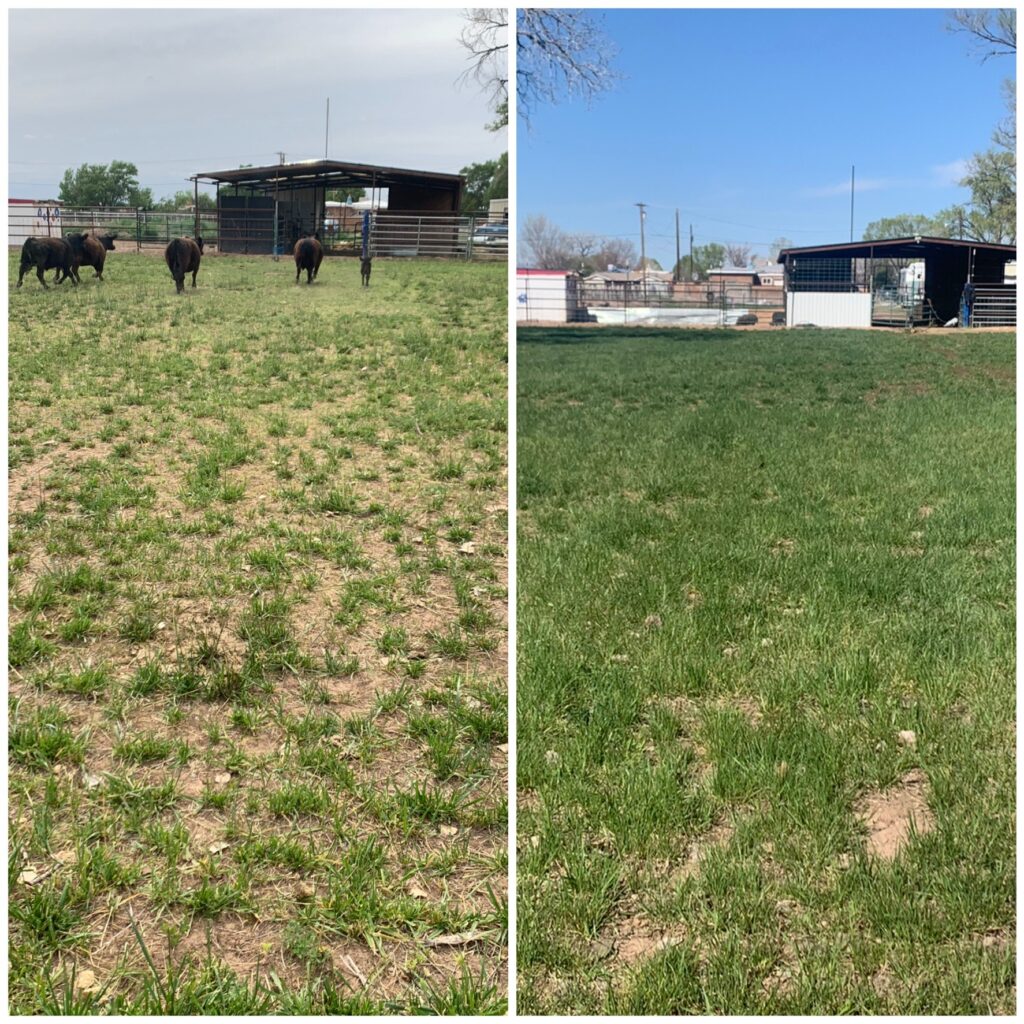
Kirsten is also passionate about improving soil health and enjoys figuring out which regenerative practice works for her area and how she might need to tweak some of those practices to get the results she wants. She says that she tells new producers who want to establish a new pasture but haven’t been able to get a soil yet to start out with some oats, triticale, and peas to get something growing. She found that it works best if she uses some Johnson-Su compost as an inoculate for the seeds. She actually has three different bio-reactors going on her farm.
“I coat the seeds with the compost using a cement blender and then put it on tarp to let it dry,” says Kirsten. “Then I put it though my no-till drill. But, you have to have water to those seed in the next 24 hours. That compost is alive, so you’ve got to get water to it right away to help it with seed germination. If I’m using flood irrigation for the watering then I add the compost at the ditch gate. I might also add the compost to a drip irrigation with fish emulsion as well.
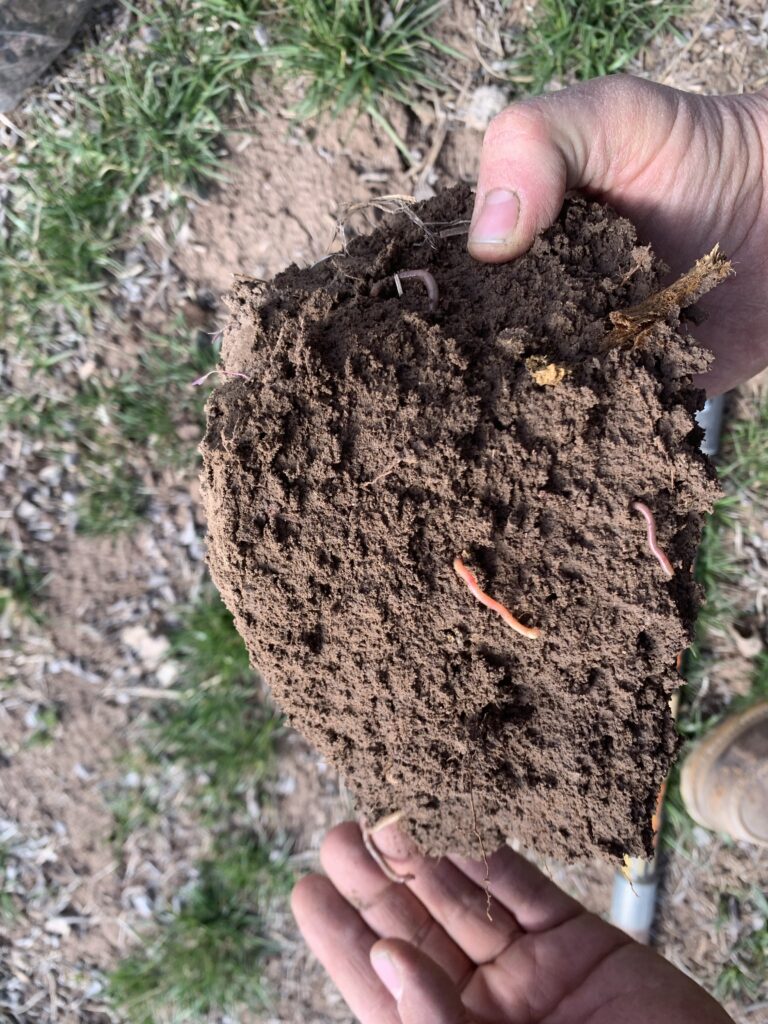
“To rehabilitate an old alfalfa field and I will plant spring, summer, and fall cover crops one year and add the Johnson-Su compost. Then I’ll plant some clover and fescue. Within the second year I will plant perennials. After that, each year I add some annual to get the diversity like oats, peas, Sudan grass, and winter wheat.
“I also seed my covers heavy at about 50#/acre where there is weed competition. Prices used to be $10-12 /bag now it is more like $26/bag, but I still seed at the same rate. I looked at NMSU research to see what might do well here and I am averaging about seven species in my mix. I prefer to buy local seed when I can get it.
“I’ve also found that grazing is super important get rid of weeds. Our animals will eat mustard, kochia, and pigweed. If you don’t have animals to cycle your cover crop, then you have to crimp it. I’ve found that oats will help pull salt out of the soil. I also plant a high-salt alfalfa, or strawberry clover, or Forte Tall Fescue from Alforex Seeds that does well with flood irrigation and is endophyte-free.”
October through May are usually dry for Kirsten as there is little to no irrigation. She uses 250-gallon IBC totes to water the livestock and they get a certain amount of moisture from the grass. She no longer hays other people’s ground and she is able to have enough feed for her livestock on the smaller acreage she now manages. “I only have to pay for hay in the cold of winter,” says Kirsten. “My grass springs up right away with my growing season of May 1 through late October. In the past I would have had to supplement throughout the year. Now with winter wheat I can even start grazing in March. During the winter I bale graze on something like triticale. I get one-ton bales and lay them out around the pasture.”
Marketing Opportunities

Kirsten sells her products through her Sublime Pastures CSA as well as through the Downtown Growers Market. Her CSA grows by word of mouth and she has sold out every year. Her meat chicken customers were a steady customer base with people coming from Las Cruces and even from Northern New Mexico to purchase her birds. “The chickens were definitely the most profitable enterprise,” says Kirsten. She estimates she serves around 150 customers.
Kirsten has wholesale accounts with restaurants and bakeries as well as her direct marketing channels. While she harvested her own birds, she usually will have her cattle and pigs slaughtered at Western Way Meat Processing in Moriarty. However, she also sells her pigs for matanzas. The customer can just purchase the pig, or they can purchase the pig and ask for guidance on how to slaughter and cut up the pig, paying a tip to Kirsten for that help.
Coming Full Circle
Kirsten is very grateful to the Valencia SWCD for their support of her regenerative farming journey. They awarded her a grant in 2019 so she could purchase the electric fencing and charger to improve her grazing management.

“I started full regenerative agriculture in 2018,” says Kirsten. “I can see the results. Now I’m able to graze three cows/acre with my perennials and covers. I’ve also been able to go to a 45 to 60-day recovery because of the quicker plant recovery with healthy soil and healthy roots. I also have seen how well the flood irrigation is going into the soil. It used to be a week before I could move the cows back on to an area where we had flooded. Now it is only two days. My baseline organic matter was under 1% when I first had it tested. I’ll be testing it again this year. There was also a lot of salt in the soil. I am looking at the diversity now in the fields like seeing mushrooms and ladybugs. I’m very happy at what I’m seeing.
“I never thought I would have got to this point of farming and consulting. When I started there was no one really doing regenerative farming. It’s so exciting to help others and continue learning. My family is from New Mexico so it’s great to be back on the land in New Mexico. It feels like I’ve come full circle from learning about all regenerative agriculture at the REGENERATE Conference as a HERD fellow. I love my life.”
To learn more about Kirsten and Sublime Pastures visit:
Thank you to the Thornburg Foundation for their funding of this case study.
